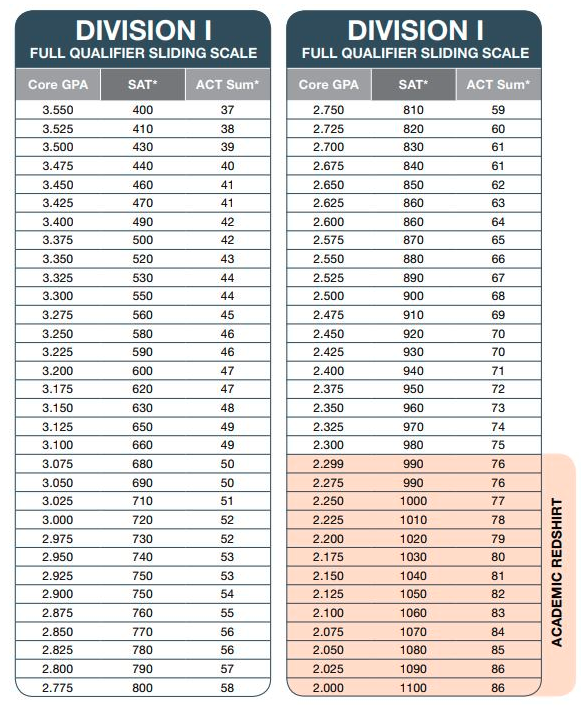
Men Menu
The NCAA is currently the highest level of competitive gymnastics outside of the Elite Pathway. Only student-athletes who have graduated high school (or equivalent) and have been cleared by the NCAA Eligibility Center may compete. Student-athletes have represented the NCAA as young as 15 and as old as 25. There’s a limited eligibility window, as described below.
The NCAA consists of 3 Divisions. All teams in all divisions compete against one another throughout the regular season and are eligible for conference and NCAA championship awards as teams and individuals. NCAA-sponsored men’s gymnastics programs are funded by their individual schools and have annual budgets ranging from $150,000-$1,500,000. All schools have their own facilities where student-athletes train free of charge. Each school has 2-3 coaches, and there are 15-30 athletes on the roster. NCAA programs may only require 20 hours of training per week, but student-athletes are permitted to train beyond those 20 hours voluntarily. Student-athletes have access to a full-time trainer and doctors as needed. All athletes receive gear and uniforms, chalk, grips, wrist guards, travel, food and lodging during team competitions, and almost any other need related to gymnastics.
The NCAA men’s gymnastics system currently has the top 300 athletes in the country and recruits approximately 75 of the best Junior athletes each year from the Junior elite track, top National track gymnasts, as well as international gymnasts. The NCAA system provides athletes with the coaching and resources to take the path toward making the Senior National Team and competing internationally. All competitions include the highest caliber judges and are held in beautiful venues located at and provided by the school.
Student-athletes are eligible for the sport’s most prestigious awards, including NCAA champions, All-America accolades, Rookie of the Year, Specialist of the Year, Gymnast of the Year, and the Nissen-Emery award, which is the “Heisman Trophy” of gymnastics. This award is given to a Senior each year and takes into account their entire collegiate career.
If you are looking to be recruited to an NCAA program, visit collegegym.org/ncaa.
Here you can email, text, or call any coach from the University that you are interested in attending. Coaches can help give you more information about their school or the recruiting process. Prospective athletes can contact coaches by phone at any time. There are restrictions on when and how coaches can contact athletes.
Once a student has completed and earned a high school diploma, they have 1 “gap year” before their NCAA eligibility “clock” begins. An exception to the rules is if a student enrolls full-time at any college, their “clock” begins immediately. Each student has 5 years to compete 4 seasons once their clock begins. If an injury occurs during their 4 years of competition, a student-athlete can apply for a “red shirt” waiver where they can use their 5th year for competition as long as they competed for less than 30% of the season in the season that they suffered their injury and continue as a full-time student undergraduate or graduate student during this year.
Division I is the highest level in the NCAA and has the most competitive teams. The NCAA Division I currently includes 12 universities:
All Division I men’s gymnastics schools have a maximum of 6.3 scholarships (including partial scholarships) to divide between student-athletes. William & Mary and the University of California-Berkeley are partially funded with scholarships. The 3 academies cover all expenses for all student-athletes with a pledge of service upon graduation. All other programs have a maximum of 6.3 scholarships. An athlete could receive a full scholarship, a partial scholarship, or a walk-on opportunity. A walk-on opportunity receives all of the same incentives and support as a scholarship athlete but does not receive tuition assistance or a stipend for expenses. Walk-on athletes could have the opportunity to earn a scholarship after joining the program.
Most universities accept all athletes recruited onto the team as long as they meet the minimum eligibility requirements for NCAA eligibility center based on the core curriculum, test scores, and GPA, even if the university would not accept that athlete on academic accolades alone. Nearly all Division I programs provide an academic counselor that oversees the team in addition to free tutoring.

The NCAA Division II currently has no schools that sponsor Men’s Gymnastics. As we continue to grow, we expect this will change in the coming years. Future Division II men’s gymnastics schools will have a maximum of 5.4 scholarships to divide among their rosters.
The NCAA Division III currently includes 3 universities: Springfield University, Greenville University, and Simpson College. Division III men’s gymnastics schools do not have athletic scholarships, but they include all of the other perks and competition opportunities as the Division I and II schools. There are academic scholarship opportunities to offset the cost of attendance at Division II & III Schools.